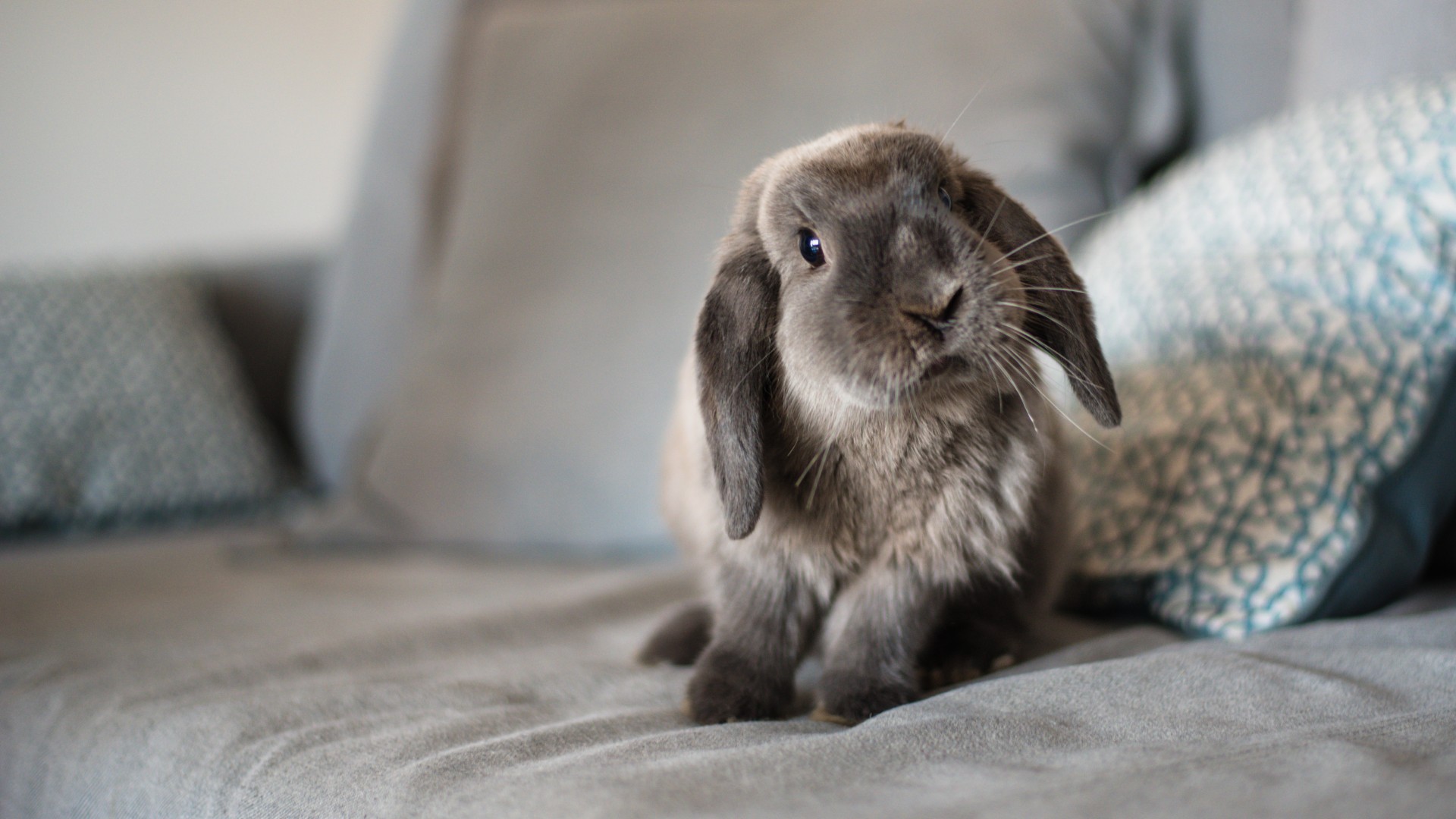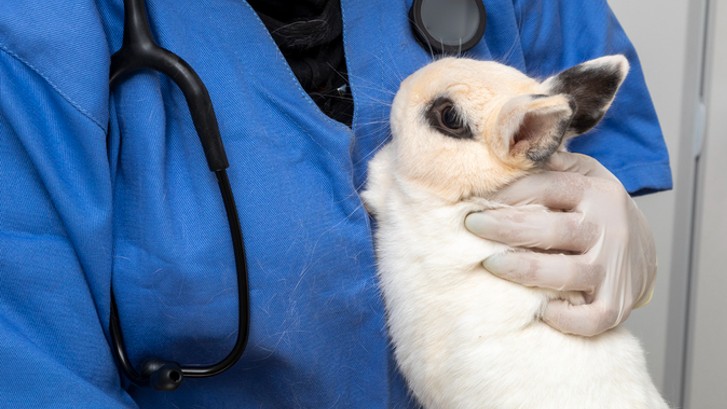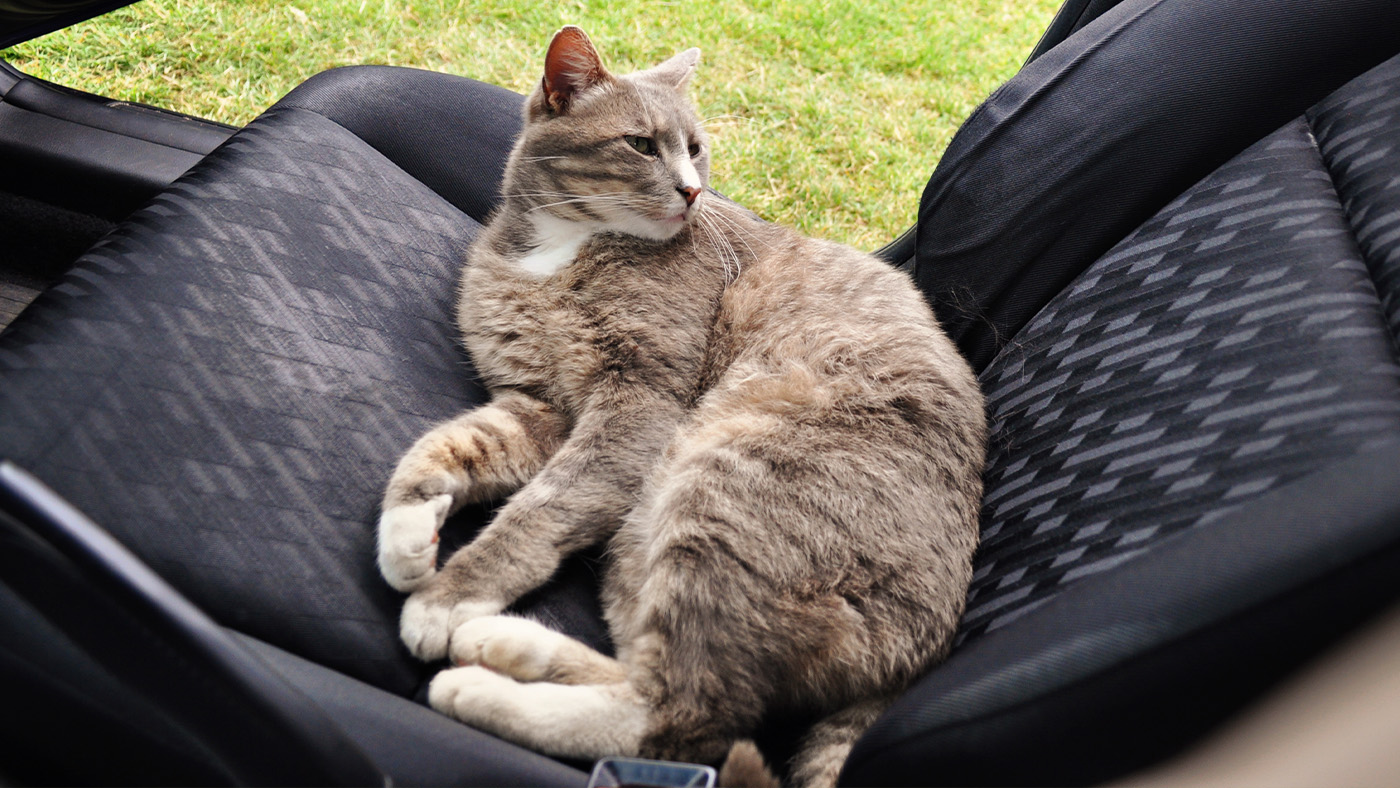Guide to rabbit grooming: How to keep your bunny’s hair trim
Want to learn about rabbit grooming? Our vet explains everything you need to know.

Rabbit grooming is an essential part of your bunny’s daily routine. Not only does it prevent unwanted health issues and discomfort, but it’s a great way to spend time together and bond.
If you’ve recently welcomed a bunny into your life, then you’ll want to invest in the best rabbit brushes. You don’t need to spend a lot of money, but your rabbit will really appreciate the special care. While all rabbits need regular brushing, it’s even more important for long-haired or wool-producing breeds.
If your bunny isn’t groomed correctly, their coat will become dirty and matted, and they may even get skin infections, parasites, or other common rabbit diseases. Removing the excess hair also prevents your rabbit from ingesting hazardous hairballs when they groom themselves.
Below, vet Dr. Elizabeth Racine explains how to groom, how to check for parasites, and whether you need to bathe your bunny:
Do rabbits need grooming?
Although rabbits are fastidious groomers and are quite good at keeping themselves clean, they still need regular grooming to help keep them looking and feeling their best. Regular grooming helps to prevent matting of the coat and also prevents your rabbit from getting hairballs from ingesting loose fur. It is also a great time to check your rabbit’s coat and skin for any abnormalities, bond with your bunny and look for parasites. If you suspect your floppy-eared friend might have an infestation, be sure to check out our guide to how to get rid of fleas on rabbits.
Developing a regular grooming routine daily or weekly depending on your rabbit’s needs will ensure that your rabbit’s coat always stays clean and healthy. A good grooming routine should include checking the rabbit’s teeth to ensure they are not overgrown, checking the rabbit’s ears and cleaning them if necessary, brushing the rabbit’s fur, checking the rabbit’s feet for sores, and trimming the rabbit’s nails.
Doing this on a regular basis will not only ensure your rabbit is healthy, but will also get your rabbit used to being handled in a variety of ways!

Brushing your rabbit's fur
Basic grooming starts with maintaining your rabbit’s fur. How often you’ll need to brush your rabbit depends on the type of fur they have – longer-haired rabbits should be brushed daily, while short-haired breeds may be able to go a few days at a time between brushings.
Tools such as a slicker brush, a wide tooth comb, and a flea comb are great to keep on hand for grooming. As you brush your rabbit, use gentle strokes and avoid tugging on any mats or tangles, which may irritate your rabbit’s sensitive skin. Offering some tasty treats during rabbit grooming can also help make the process easier.
If you encounter any tangles or mats in your rabbit’s fur, you can try to gently untangle them using a wide-tooth comb (also known as a fur splitter). Be careful not to pull too hard, because this can hurt your rabbit and make them more apprehensive about grooming in the future.
If the mat is tightly woven, it may be difficult or impossible to comb it out. In these cases, it’s best to remove the mat using electric clippers, or take your rabbit to a vet or professional groomer to have the mat clipped. Never try to cut a mat out with scissors! It is often difficult to tell where the mat ends and cutting too far can lead to serious injury when rabbit grooming.
Checking for parasites and other problems
Grooming time isn’t just to make your rabbit look nice – it’s also a great opportunity to check for potential problems like parasites. While brushing your rabbit’s fur, keep a close eye out for symptoms like dandruff, red or itchy skin, rashes, and hair loss. Make sure you check your rabbit’s whole body, including in the ears, under the tail, and between the toes.
Remember, just because you don’t see any parasites, doesn’t mean that they aren’t there! Some parasites, like fleas and ticks, are large enough to be seen with the naked eye, but others, like mites, are only visible under a microscope.
If your rabbit shows symptoms of parasites or other skin problems, it’s important to see your vet right away for appropriate diagnosis and treatment. Although it may be tempting to try to treat your rabbit yourself with home remedies or over-the-counter flea treatments, this may do more harm than good. Rabbits are very sensitive to many medications, and flea products intended for cats and dogs can be toxic.
Getting a medication from your veterinarian that is safe for rabbits is the best way to address the problem. Your veterinarian may also recommend some environmental management, such as changing your rabbit’s bedding, washing the cage in hot water, and vacuuming resting areas frequently to help remove parasites from the environment and prevent re-infection. So rabbit grooming isn't just about keeping their hair nice.

Should I bathe my rabbit?
In general, no, rabbits should not be bathed. Rabbits groom themselves regularly, similar to cats, and therefore there is no need to give your rabbit a full body bath. If your rabbit is dirty, spot washing the dirty area with warm water and a soft cloth should be enough to do the trick.
Fully submerging your rabbit in water is extremely stressful for your rabbit and can lead to illness or even death due to the extreme stress. Only bathe your rabbit if advised to do so by your vet. Your vet may recommend bathing with a special medicated shampoo if your rabbit develops a skin infection or has parasites. Be sure to follow your vet’s instructions closely and bathe your rabbit only as directed.
Trimming your rabbit's nails
Long nails have a tendency to get caught on things – especially wire rabbit cages. Keeping your rabbit’s nails trimmed short will prevent injury, and also help you avoid getting scratched! This is also a great time to check your rabbit’s feet for any sores that may develop from sitting on wire, and to look for urine and fecal staining that may indicate a problem with the cleanliness of the rabbit’s environment.
To trim your rabbit’s nails, it’s helpful to have someone else hold your rabbit and offer some treats to keep him occupied. For more tips on cutting them down, we’ve created a guide on how to cut rabbit nails.

Keeping your rabbit looking their best
A well-groomed rabbit doesn’t just look good – he feels good, too! Keeping your rabbit’s coat clean, brushed, and free of mats is the best way to keep your rabbit comfortable and prevent skin problems.
Regular daily or weekly grooming is necessary for every rabbit, although the exact frequency of grooming varies depending on your rabbit’s coat and environment. If you encounter problems during grooming, a professional groomer or your vet are great resources to help you make your rabbit’s coat shine.
For more advice like this, read: What do rabbits need in their cage and how long do rabbits live?
PetsRadar Newsletter
Get the best advice, tips and top tech for your beloved Pets
Dr. Elizabeth Racine is a small animal general practice vet covering all things pet health and wellness. Her special interests include veterinary behavior, nutrition, and internal medicine.
As a freelance writer, Dr. Racine has written content for major companies in the industry such as the American Kennel Club, Merck Animal Health, Bayer PetBasics, Elanco, and CareCredit. In her free time, Dr. Racine enjoys playing trampoline dodgeball, hiking with her beagle Dasher, and spending time with her three mischievous cats.
- Megan MilsteadStaff Writer

